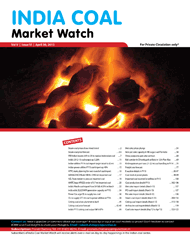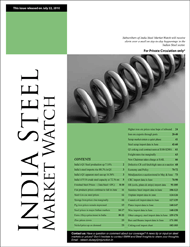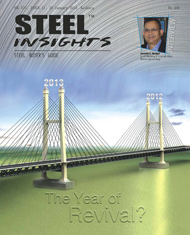The US will not be able to resolve its steel dispute with Europe through a deal
that discriminates against other countries, the EU’s trade commissioner has
said, underlining the challenge of finding a compromise to end the stand-off.
Valdis
Dombrovskis told the Financial Times that he was hopeful of a breakthrough to
end the threat of renewed tariffs on EU
steel imports ahead of a meeting with Katherine Tai, the US trade
representative, on Thursday. Without a deal, the tariffs, lifted temporarily,
would return in December along with retaliatory measures from the EU.
But
the commissioner insisted that the EU would not sign up to any agreement that
breaches global trade standards. Experts have argued that elements of
Washington’s proposed solution could unfairly discriminate against imports from
some countries.
“As
the EU, we’re committed to multilateralism, to the rules-based global
order,” Dombrovskis said. “We would like to avoid engaging in agreements
which manifestly violate World Trade Organization rules.”
The
section 232 tariffs of 25 per cent on steel and 10 per cent on aluminium were
imposed by former US president Donald Trump on national security grounds,
outraging EU capitals.
The
two sides paused the dispute two years ago and promised to form a sustainable
steel club that would prioritise low-carbon metal, tackle global
overproduction, and Chinese subsidies.
However,
they have struggled to find an agreement on this Global Arrangement on
Sustainable Steel and Aluminium (GSA) ahead of a deadline in October. The
US has proposed allowing club members to set emissions standards, and levy
tariffs on those who do not meet them, according to media reports.
Independent
analysts say such a proposal, which favours domestic producers, would probably break
WTO rules.
For
its part, Brussels is introducing a carbon border adjustment mechanism (CBAM),
which will levy tariffs on imports according to how much carbon they emit. It
wants this to form the basis of the club. But the US has no national
carbon pricing system and is unlikely to adopt one soon.
“We
respect the EU’s concerns but we continue to wait for a proposal from their
side that meets our high level of ambition and addresses our shared concerns on
climate change and overcapacity,” said Sam Michel, a spokesperson for the US
trade representative’s office.
Dombrovskis
declined to speculate on whether the two sides could prolong the truce if there
were no agreement by October. “Currently, we are focusing on delivering plan
A,” he said.
Dombrovskis
also said he would discuss the US Inflation
Reduction Act, which ties many American subsidies to domestic production.
He is seeking a mandate from EU members to negotiate a deal to have critical raw
materials mined or processed in the EU and used in batteries as qualifying for
US consumer credits.
He
expected to clinch a deal before an expected EU/US summit later this year.
“Given the fact that we already have extensive discussions on this component of
the agreement before, we should be able to make rapid progress once we have a
mandate,” he said.
However,
many member states want the agreement to include all 50 metals covered by the
IRA, not just the five offered by the US.
Dombrovskis
emphasised the importance of transatlantic trade, describing it as “the artery
of the world economy”. He warned that there was a risk of fragmentation in
global trade as some countries raise barriers to flows of products and
services. “We think it’s important to avoid this fragmentation,” he said.
He
added: “For this, we need to stick with multilateralism and we need to defend
the rules-based global trading order. And we need to preserve the relevance of
the WTO.”



